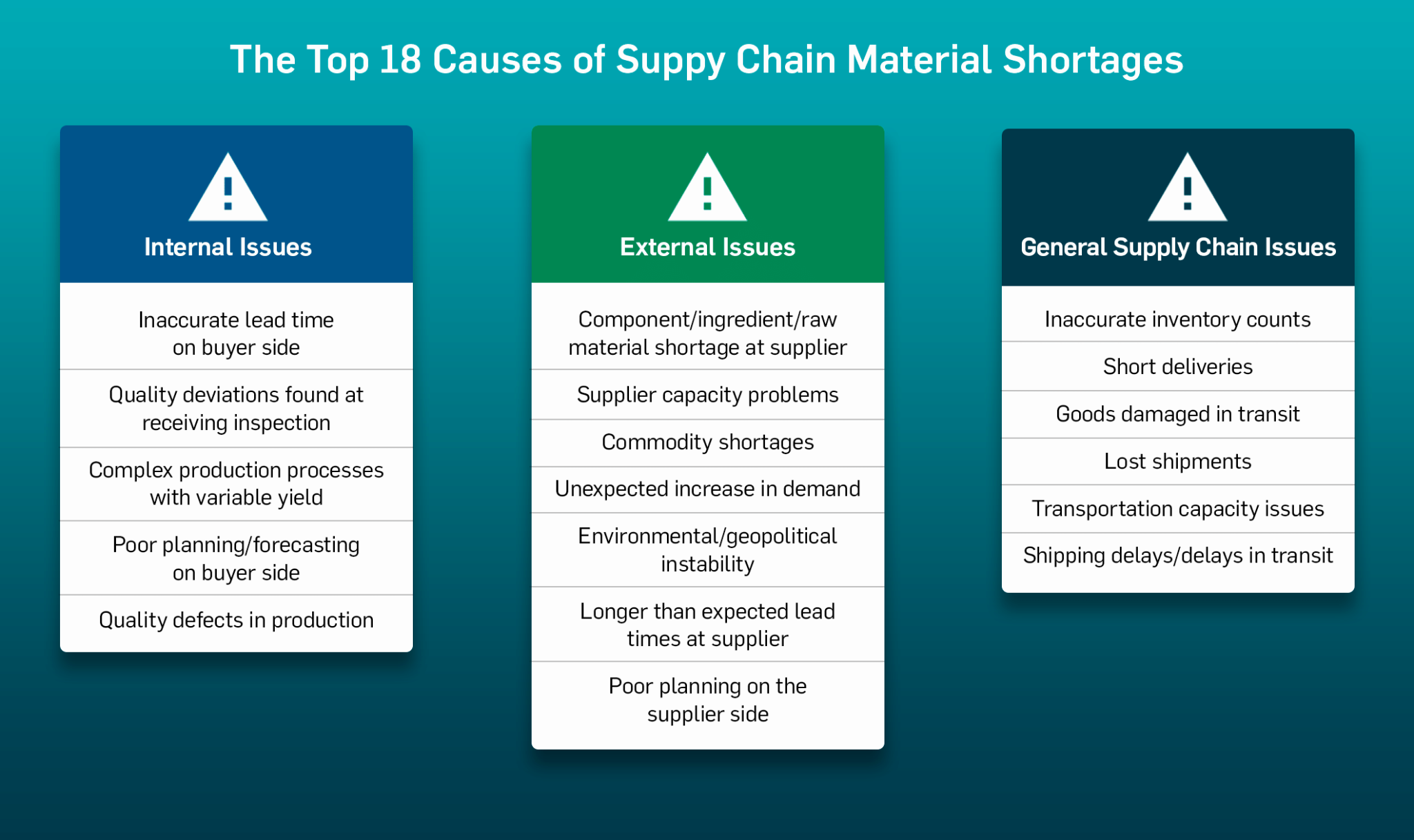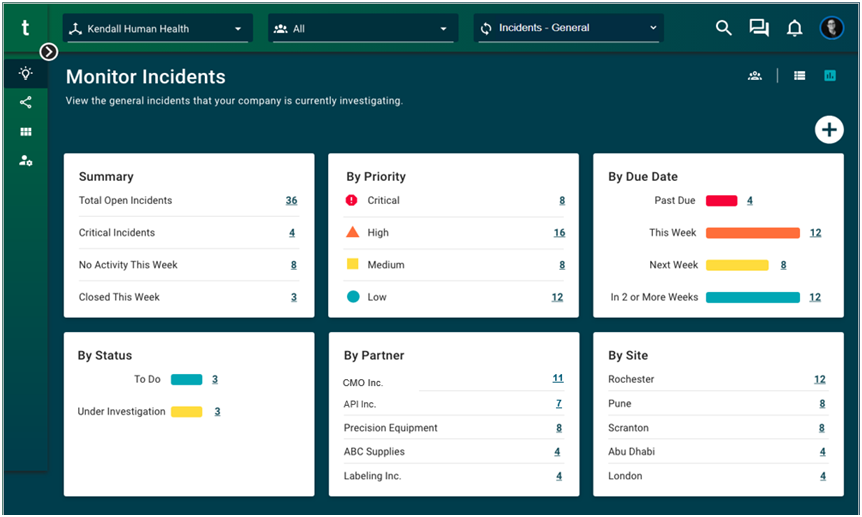Table of contents
Global shortages in everything from plastics and construction materials to raw materials and semiconductor chips are dominating the headlines—and wreaking havoc on the efforts of supply chain planning teams to effectively predict demand, ensure supply accuracy, and successfully coordinate the flow of goods into customers’ hands on time, in full (OTIF).
But your supply chain planning teams also have a new digital ally in the ongoing effort to mitigate the impact of material shortages. Supply Chain Work Management, running on the TraceLink Opus Digital Network Platform, is providing planning departments with something they have lacked in the past: real-time access to suppliers, complete visibility into all supply chain issues and planning exceptions, and collaborative, workflow-driven processes that are proven to help manufacturing organizations resolve material shortages up to 65% faster.
Before we delve into the technology and how it can make your supply chain planning team more agile and resilient, let’s explore some of the top issues that lead to material shortages and create exceptions to your supply chain planning processes—exceptions that can easily escalate into full-scale disruptions if not rapidly resolved.

As we see in the chart, material shortages can stem from numerous issues that are internal to your organization—like issues related to your production processes or inaccurate buyer-side planning—and external issues that originate with your supply chain partners, like capacity problems or lengthy lead times. Material shortages can also result from external factors that are well beyond the control of both your organization and its partners. These include geopolitical instability and unexpected increases in demand.
The critical factors that determine whether your organization is well equipped to completely avoid or significantly reduce the impact of material shortages include:
- How fast it can identify the issues or potential issues—both internal and external—that can lead to material shortages and supply chain disruptions.
- How quickly it can connect and collaborate with suppliers to initiate issue or exception resolution processes and implement a plan of action to find an alternate supplier or avoid the impact of a shortage.
- How efficient its processes are for following up with suppliers, and how strong its relationships are with those suppliers.
Unfortunately, however, today’s planning teams depend on time-consuming and unstructured manual processes to follow up with suppliers and resolve exceptions. Spreadsheets are scattered across the internal organization, as well as across the end-to-end supply chain, with no central source of truth that is easily accessible by all stakeholders. This leads to poor communication, long exception resolution times, and a lack of speed and agility when responding to issues like late deliveries, volatile demand, and material shortages.
The problem is that supply chain planning teams have not had access to digital technology that enables real-time, workflow-driven collaboration with suppliers while speeding up and automating exception resolution processes—until now.
Reduce material shortages with TraceLink
TraceLink TraceLink Supply Chain Work Management is the key to rapidly identifying and resolving the issues and exceptions that lead directly to material shortages and late deliveries to your customers.
With access to the more than 287,000 companies on the TraceLink Opus Digital Network from across the supply chain, Supply Chain Work Management is a multienteprise work management solution that connects you and your suppliers in real-time to support rapid exception resolution.
With Supply Chain Work Management, exceptions are automatically captured and routed to the right supplier to begin the resolution process. Real-time dashboards provide a 360-degree view into all exceptions impacting your supply chain. Instant notifications alert your suppliers when you need confirmation that they can resolve exceptions, or that collaboration is needed to find an alternative resolution. All exception resolution processes are structured and workflow-driven, and everyone shares a single source of truth. As a result, all stakeholders know the current status of the issue and who is responsible for next steps.

Why would your suppliers want to join you on the TraceLink network? Because it will help them achieve the goals they care about most: On-time delivery, proper quantity rate, response timeliness to quality concerns, and a stronger, more efficient, and more collaborative relationship with you. Additionally, all of your suppliers get free access to the solution and free onboarding from TraceLink.
In addition to 65% faster exception resolution times, supply chain planning teams have achieved impressive results using the historical data in TraceLink Supply Chain Work Management to support root cause analysis and business process improvement. Benefits include:
- Reduce the total number of supply chain exceptions by as much as 35%. in the total number of supply chain issues
- Reduce up to 50% of recurring deviations.
- Eliminate up to 97% of manufacturing disruptions.
- Reduce defects per million by as much as 96%.
- Improve OTIF delivery performance by as much as 82%.
With TraceLink Supply Chain Work Management, your planners can stop chasing down suppliers and spreadsheets and spend more time creating effective and accurate supply chain plans that drive your organization forward.
Learn more in our Supply Chain Work Management Resource Center.





